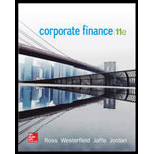
Concept explainers
Spot and Forward Rates Suppose the exchange rate for the Swiss franc is quoted as SF 1.09 in the spot market and SF 1.11 in the 90-day forward market.
a. Is the dollar selling at a premium or a discount relative to the franc?
b. Does the financial market expect the franc to strengthen relative to the dollar? Explain.
c. What do you suspect is true about relative economic conditions in the United States and Switzerland?
a.
To explain: In relation to franc whether the dollar is selling at premium or discount.
Spot Rate:
Spot rate may be regarded as the value at which a security or commodity is readily sellable. The spot rate is driven by the forces like value which are likely to be paid by the buyers and the sellers depending on the security’s market value and its future market value. The spot transaction is settled within one or two business days from the ‘horizon’ commonly known to be the trade day. Irrespective of any other factors the settlement takes place on the spot date at the agreed spot rate or price.
Explanation of Solution
Given,
The exchange rate for Country S franc is quoted as SF 1.09 in the spot market and SF 1.11 in the 90-day forward market.
Therefore, in the given case the spot rate is SF 1.09 and forward rate is SF 1.11 in 90-day forward market. Hence, the forward rate tends to be more than the spot rate and hence in terms of franc currency the dollar is selling at premium.
Since the exchange rate for Country S franc for dollars is quoted, the forward rate is more than the spot rate of the currency. Hence, the dollar that is the currency to be exchanged is said to be selling at premium.
Hence, in relation to Country S franc the dollar is said to be selling at premium.
b.
To explain: Financial market’s expectation for franc to enhance relative to the dollar.
Forward Rate:
Forward rate can be defined as the interest rate derived from the spot rate which is equal to the total value of the return of a long term investment including the adjustments for the carrying costs to analyze future interest rate. In general, it may be regarded as fixation of interest rates to fulfill a financial obligation arising in near future.
Explanation of Solution
Given,
The exchange rate for Country S franc is quoted as SF 1.09 in the spot market and SF 1.11 in the 90-day forward market.
From the above mentioned statement it is apparent that dollar is selling at premium. Also, in such transactions if one currency decreases or sells at discount the other increases or sells at premium. Hence in the given transaction if dollar is selling at premium, considering its forward rate, the related currency that is Swiss franc is expected to depreciate. In nutshell, it will take more Swiss francs to buy a dollar.
While dealing with spot and forward market we come across different transactions. The transactions involves two different currencies, if one of them depicts the tendency of being sellable at premium, it is implied that the other currency is selling at discount. But the currency at discount is expected to depreciate in terms of its value in relation to the currency in which it is quoted as the spot rate along with the forward rate implies that the currency is depreciating with time and more of franc will be required to buy a unit of dollar.
Hence, Country Sfranc is expected to depreciate in future in terms of its value relative to dollar.
c.
To explain: Relative economic conditions in Country UandCountry S
Explanation of Solution
The afore said currency values depict the relative conditions of the two economies. The currency at discount value implies that the country is facing a phase of inflation with relatively higher rate than the country with currency which is at premium.
Therefore, the economic conditions of the respective countries reveal that Country S is facing higher level of inflation in its economy than Country U.
- The inflation rate in the country is inversely proportional to the currency’s performance in the market.
- If the currency is at discount in the market then the economy is said to be facing a comparatively higher degree of inflation.
Hence, the economy can be analyzed on the basis of the performance of its currency in the financial market as the decrease in the same shall shoot up the inflation rate of the country and vice-versa.
Want to see more full solutions like this?
Chapter 31 Solutions
Corporate Finance (The Mcgraw-hill/Irwin Series in Finance, Insurance, and Real Estate)

 Managerial Accounting: The Cornerstone of Busines...AccountingISBN:9781337115773Author:Maryanne M. Mowen, Don R. Hansen, Dan L. HeitgerPublisher:Cengage Learning
Managerial Accounting: The Cornerstone of Busines...AccountingISBN:9781337115773Author:Maryanne M. Mowen, Don R. Hansen, Dan L. HeitgerPublisher:Cengage Learning Intermediate Financial Management (MindTap Course...FinanceISBN:9781337395083Author:Eugene F. Brigham, Phillip R. DavesPublisher:Cengage Learning
Intermediate Financial Management (MindTap Course...FinanceISBN:9781337395083Author:Eugene F. Brigham, Phillip R. DavesPublisher:Cengage Learning



